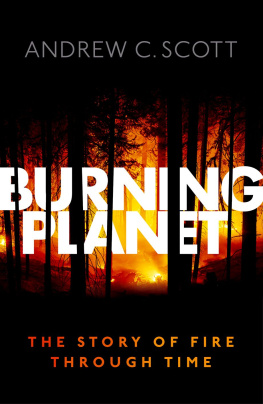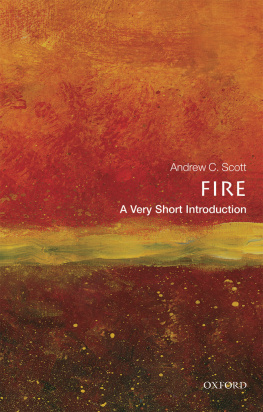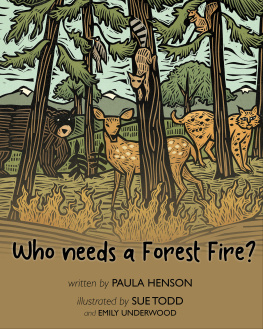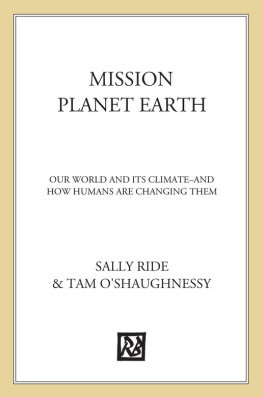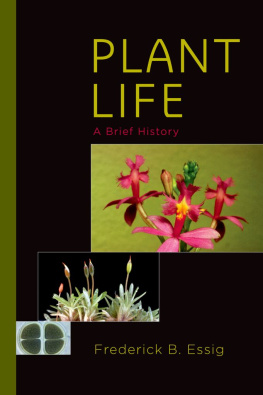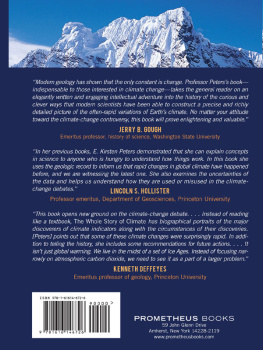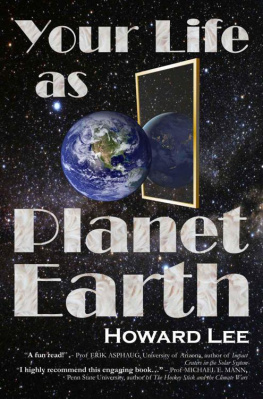Burning Planet
Andrew Scotts career-long obsession with fire has paid dividends. His detailed and entertaining book gives us a no-stone-unturned account of the natural history of fire. It takes us on an extraordinary journey from fires on heathlands to the working of the Earth system with remarkable implications for life on the planet.
David Beerling, author of The Emerald Planet
This deep time perspective shows that fire has always been with us, and raises the question about how we should live with it in the future.
Sir Peter Crane FRS, President, Oak Spring Garden Foundation and Former Director of the Royal Botanic Gardens, Kew
Scott shows how the occurrence of fire through Earth history provides a new lens through which to understand the evolution of plants, animals, landscapes, and climate changes through the last 450 million years, and to consider possible effects on human welfare. I recommend it to anyone curious about Earth history.
Jennifer A. Clack FRS, Professor Emeritus of Vertebrate Palaeontology, Cambridge University
Wildfire, that force of nature that terrifies us all, has played a vital role in the evolution of life and environments on Earth for million of years. Andrew Scott tells a fascinating personal story of his research into charcoal and the history of fire through geological timeand how fire will, no doubt, play a major role in our future warm world.
Dame Jane Francis, British Antarctic Survey

Great Clarendon Street, Oxford, ox 2 6 dp , United Kingdom
Oxford University Press is a department of the University of Oxford. It furthers the Universitys objective of excellence in research, scholarship, and education by publishing worldwide. Oxford is a registered trade mark of Oxford University Press in the UK and in certain other countries
Andrew C. Scott 2018
The moral rights of the author have been asserted
First Edition published in 2018
Impression: 1
All rights reserved. No part of this publication may be reproduced, stored in a retrieval system, or transmitted, in any form or by any means, without the prior permission in writing of Oxford University Press, or as expressly permitted by law, by licence or under terms agreed with the appropriate reprographics rights organization. Enquiries concerning reproduction outside the scope of the above should be sent to the Rights Department, Oxford University Press, at the address above
You must not circulate this work in any other form and you must impose this same condition on any acquirer
Published in the United States of America by Oxford University Press 198 Madison Avenue, New York, NY 10016, United States of America
British Library Cataloguing in Publication Data
Data available
Library of Congress Control Number: 2017947208
ISBN 9780198734840
ebook ISBN 9780191054068
Printed in Great Britain by Clays Ltd, St Ives plc
Links to third party websites are provided by Oxford in good faith and for information only. Oxford disclaims any responsibility for the materials contained in any third party website referenced in this work.
For Bill Chaloner FRS (19282016),
for introducing me to the world of fire in deep time,
and for my wife Anne, for her patience
Contents
There is something exhilarating as well as terrifying about a wildfire. Accounts and images of wildfires raging out of control form dramatic news stories. In this context, fire is invariably regarded as bad, and assumed to have been started by deliberate acts of arson. Yet this is not always the case. We tend to forget that fire is also a force of nature. Fire on Earth today is much misunderstood, and few are aware that it has a history on our planet that stretches back 400 million years. Evidence of fire has now been found deep in the Earths past. In this book, I describe what has been discovered of the long history of fire, and our understanding of the role that fire has played in evolution and ecology, as well as its taming by humans, and the challenge that wildfire poses today, and is likely to pose increasingly as the Earth warms.
I have spent my working life researching fire. My paper on 300-million-year-old charcoalified leavesthe first paper identifying the earliest fossil coniferwas published more than 40 years ago. Since then, I have worked on preservation by fire and what it can tell us about Earth history. The incredible preservation of charcoal produced from wildfire can be a revelation. It can capture the finest details of flowers and other delicate plant organs. Through the rich information provided by fossil charcoal, we can piece together the long history of fire on this planet, the vegetation it burned, and the climate in which that vegetation grew.
I hope this book will introduce fire and the remarkable story that fossil charcoal holds to anyone interested in the workings and the history of our planet. Occasionally I will have to introduce geological terms that may be new to some readers, though they are few, and explained on their first mention. But to help those who are less familiar with the language of geology, there is a short glossary of terms that appear from time to time through the book.
When we talk about deep history, we will need to use the International Geological Time Scale, which divides the millions of years of Earth history into eras, periods, and epochs. It is reproduced at the back of the book for quick reference (see ).
I must first thank the late Professor William G. (Bill) Chaloner FRS, who first awoke my interest in the deep-time history of wildfire while I was his PhD student. It was a pleasure to have shared an office with him when we were both retired from our academic teaching positions. I must also thank Margaret Collinson (now Professor Margaret E. Collinson), a fellow student of Bills (we started together), who has also been my colleague at Royal Holloway for more than 20 years, and who has shared my interest in charcoal and wildfire; and Ian Glasspool, my former research student, who has been a great encouragement and help to me over the past 20 years. Many other former research students of ours, including Mick Cope, Kate Bartram, Richard Bateman, Tim Jones, Rachel Brown, Howard Falcon-Lang, Claire Belcher, Laura McParland, Vicky Hudspith, Mark Hardiman, Sarah Brown, and Brittany Robson, have all been of help in shaping my ideas. I also thank my colleagues at Royal Holloway, Gary Nichols, Dave Mattey, Dave Waltham, Sharon Gibbons, Neil Holloway, Kevin dSouza, as well as research assistants and post-doctoral fellows Nick Rowe, Jenny Cripps, and David Steart for encouragement.
My experience of modern fires was developed through contact firstly with Deborah Martin, John Moody, and Susan Canon, and then through the Pyrogeography Research Group that was put together by David Bowman and Jennifer Balch. I thank them for inviting me to participate. I thank the Department of Geology and Geophysics at Yale University for the award of a visiting professorship that allowed me time to shape my ideas, and the late Bob Berner, the late Leo Hickey, the late Karl Turekian, and Derek Briggs for making this possible. Thanks also are due to Stephen Pyne, William Bond, Chris Roos, and many others who have encouraged the development of my ideas. My good friend Justin Champion (Professor of the History of Modern Ideas at Royal Holloway, University of London) has helped me with some historical aspects of this book, and his encouragement is acknowledged.

